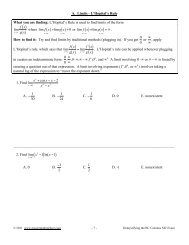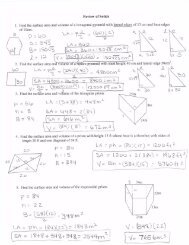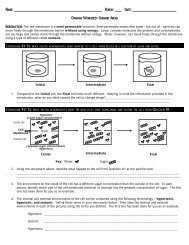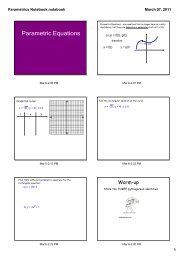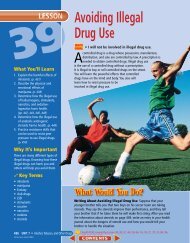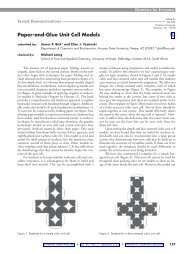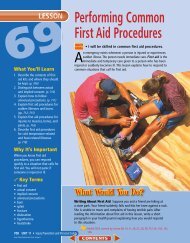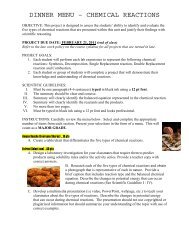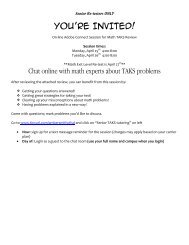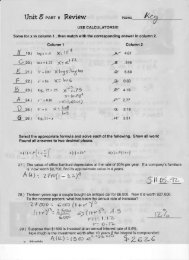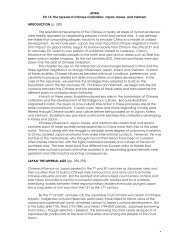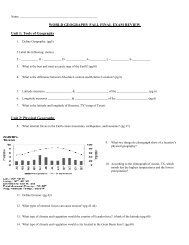Extraction of Carvone
Extraction of Carvone
Extraction of Carvone
Create successful ePaper yourself
Turn your PDF publications into a flip-book with our unique Google optimized e-Paper software.
<strong>Carvone</strong> <strong>Extraction</strong> Exercise<br />
Page 3 <strong>of</strong> 6<br />
TLC plates are either glass or aluminum that has been coated with a very thin layer <strong>of</strong> silica. See text.<br />
The polar silica is strongly attracted to polar materials, and any polar material on the plate will tend to<br />
stick to it. When you place a small spot <strong>of</strong> material at the bottom <strong>of</strong> the plate, it will be carried up the<br />
plate by the solvent as capillary action proceeds. The most polar components <strong>of</strong> the sample will be very<br />
attracted to the stationary silica gel and not move very far up the plate. The least polar materials will<br />
have no attraction at all for the silica and will dissolve in the solvent well, thus moving up the plate at<br />
the same speed as the solvent itself. As time goes on, the compounds within the sample will become<br />
separated on the plate according to polarity. The most polar molecules will be stuck at the bottom while<br />
the least polar will flow quickly to the top.<br />
A TLC plate is prepared as follows. Take a plate and mark two lines on it. Place one line approximately<br />
1-2 cm from the bottom and one 1-2 from the top. You will spot the sample on the lower line. When the<br />
TLC plate is being developed the solvent will run up the plate. You will remove the plate when the<br />
solvent reaches the second line. In about one minute the solvent will evaporate and you will be able to<br />
check your sample under UV light or stain the plate to determine which compounds appeared. After<br />
development the plate will look something like the following diagram.<br />
TLC spots are identified by their Rf value, which is the ratio <strong>of</strong> the distances the spots ran to the<br />
distance the solvent itself ran. Thus the Rf is calculated by dividing the distance the spot ran by the<br />
distance the solvent ran. You can see that the spots on the plate shown above have Rf values <strong>of</strong> 0.25,<br />
0.72, and 0.87.<br />
It can be useful to run several samples on the same TLC plate to easily compare the components <strong>of</strong> one<br />
sample with the components <strong>of</strong> another. If the same molecule is contained in two different samples,<br />
when you run the samples together on the same plate this molecule will run the same distance for both<br />
samples and you will see two spots right next to each other. The size and intensity <strong>of</strong> the spots are<br />
indicative <strong>of</strong> the amount <strong>of</strong> material, so you can see which sample contains more <strong>of</strong> the material. In this<br />
lab you will be given two samples <strong>of</strong> carvone (one + and one -) that were bought from a chemical<br />
company. You will run these on the same TLC plate as you plant material extracts in order to determine<br />
whether you actually extracted carvone and how pure this extract is.<br />
Remember to always use pencil when marking a TLC plate. Pen ink will run up the plate along with<br />
the solvent and render the plate unreadable.<br />
mhtml:file://C:\Users\dzm10601\Desktop\<strong>Carvone</strong> <strong>Extraction</strong> Exercise.mht<br />
7/26/2010



